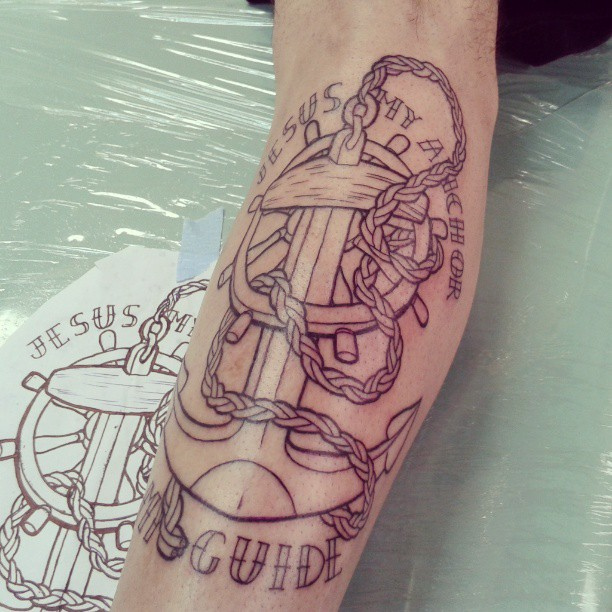Facts you do not know about Tattoos
Source: By Ricardo Almeida from Campinas, Brasil - Primeira sessão no canela! #anchor #jesus #tattoo, CC BY 2.0, https://commons.wikimedia.org/w/index.php?curid=49955303
What is a tattoo?A tattoo is:
1. Any indelible design, letter, scroll, figure, symbol, or other mark placed with the aid of needles or other instruments; or
2. Any design, letter, scroll, figure, symbol done by scarring on or under the skin.
The origin and historical meaning of the word Tattoo is believed to have two deviations as
follow;
(i) ta-striking something (Polynesian)
(ii) tatau-to mark something (Tahitian)
The use of tattoos is recorded to have begun thousands of years ago and its history is as varied and diverse as people who carry them.
The first tattoos were most likely created unintentionally. Someone with a small wound or gash happened to rub it with dirty hand that was covered by soot or ash. Once the wound had healed over the ash then that mark became a permanent condition.
No one can really state just when the history of tattoos all started. The oldest established tattoo was exposed in 1991. It was found on a mummy known as Oetzi, an Iceman dated to be at least 5300 years of age. His tattoos are comprised of horizontal and vertical lines, and he had 57 of them. There’s a certain amount of debate about the reason the tattoos are there.
The most common opinion is that the tattoos were designed for curative purposes. Oetzi’s fifty-seven tattoos were located on several joints on the body. The belief is that the tattoos were created at the same time as a form of acupuncture was practiced to relieve painful joints. Other theories range from social position and ritual markings to ethnic marks or just preference.
Source: By Tatoo: Anton Ivkin, Photograph: Alexander Kuzovlev - Own work, CC BY-SA 4.0, https://commons.wikimedia.org/w/index.php?curid=45569905
A needle, connected to a small machine with tubes containing dye, repeatedly pricks into the skin. Each needle puncture inserts tiny droplets of ink. The process, which may last several hours for a large tattoo, causes a small amount of bleeding.
There are serious health risks associated with tattoos, including:
1. Infection, including HIV, hepatitis B, hepatitis C, staph (including drug-resistant
Staphylococcus aureus), and tuberculosis,
2. Pain, itching, swelling, tenderness, redness, or tissue injury at the site
3. Allergic reaction to the ink, especially red ink.
4. Formation of thick, overdeveloped scars called keloids
5. Development of nodules of inflamed tissue called granulomas
6. Difficulty having a magnetic resonance imaging (MRI) scan performed, as some tattoo inks contain metals
What should you look for when selecting a tattoo parlor?
1. The tattooist and parlor should be neat and clean in appearance.
2. Patron (client) rights must be displayed.
3. There should be hand-washing facilities with running water available for the tattooist to use.
4. The staff should be willing and able to answer your questions.
5. Tattooists should not work when sick.
6. Tattooists must wear gloves when tattooing.
7. All equipment should be single service. Eachneedle and tube set should be individually
packaged, dated, sealed, sterilized, and opened immediately prior to your tattoo.
8. A new ink supply should be poured into a disposable container.
9. Any razors, needles, ink, plastic trays or containers, gloves, or ointments used in your tattoo application should be discarded after use.
10. Appropriate disinfectants should be used to clean the work area after tattoo application.


Tidak ada komentar:
Posting Komentar